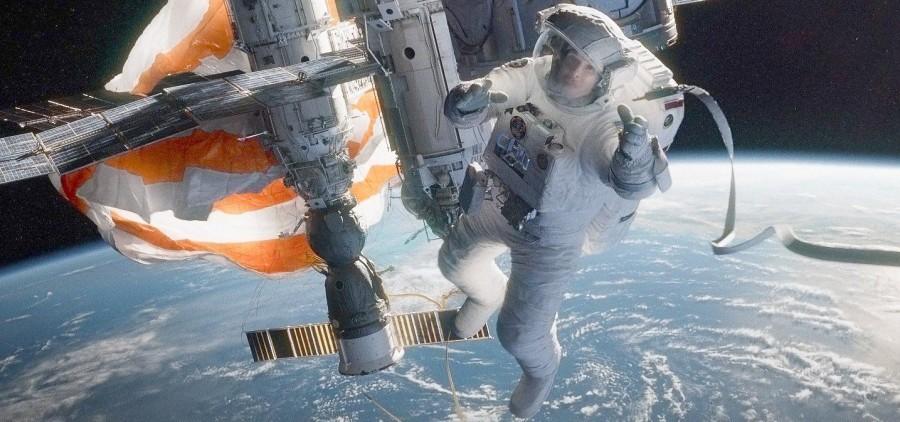“Gravity,” the sci-fi thriller directed by Alfonso Cuarón, is visually stunning. Cuarón not only delivers a truly realistic (from what we can tell) experience from an astronaut’s point of view, but he also delivers an inspiring plot line with substance. The script was co-written by his son, Jonas Cuarón.
“Gravity” begins with veteran astronaut Matt Kowalski, played by George Clooney (“The Descendants,” 2011) and medical engineer Ryan Stone, played by Sandra Bullock (“The Heat,” 2013) on a routine mission repairing a broken satellite. Stone’s first-time voyage into deep space leaves her nauseous while expert Kowalski floats and bobs skillfully throughout the various layers of the vessel.
Intel from Mission Control informs Stone and Kowalski that a Russian satellite has just exploded and is sending debris hurtling their way. However, it is too late to return to safety and Stone is sent hurtling into pitch black and terrifying silence while the satellite is violently shattered in the distance. Kowalski, the most charming astronaut we’ve ever come across, reassures her and acts as Stone’s crutch in an environment where a five-minute spacewalk can leave one without oxygen. Only through her six months of space training and Kowalski’s advice and years of space travel (not to mention sheer luck) can Stone be able to possibly survive the silent void of space and defy gravity.
Bullock accomplishes an amazing solo performance as the audience follows her desperation, panic and despair in this unrelentingly suspenseful survival flick. Clooney not only brings a lightness to the film but also a charm that adds balance to Bullock’s overflowing and intense but justified emotions. We are shown Stone’s perspective as we root for her survival.
“Gravity” travels to a new frontier when it comes to survival films. It shows us just how terrifying space can be, especially when one is lost, spinning out of control and losing all hope.
Aspiring astronauts might think twice about their future careers after watching “Gravity” especially when Murphy’s Law sets in for astronauts Stone and Kowalski.
At one point in the film, Stone is spiralling out of control after being hit by debris and we are shown the wide expanse of space. We glimpse the pure terror mirrored in her panicked eyes as she is caught utterly defenseless and exposed to the elements —the audience can’t help but feel afraid as well.
Steven Price’s score for the film builds up the blood-pumping suspense along with the ear-shattering echoes of Stone’s quickening heartbeat and over-hyperventilation.
Cuarón’s blend of animation and visual effects manages to create awe-inspiring images of the massive curvature of the earth and the never-ending expanse of space. It is no wonder that it took Cuarón nearly five years to create the film especially when it come to the advanced digital filming that went into the movie. It is a breakthrough in film technology and animation comparable to James Cameron’s “Avatar.”
Seeing this film in 3D or IMAX 3D is highly recommended. The 3D immerses you into Cuarón’s world and strikes you with space debris. “Gravity” is not just realistic — it is a virtual reality. We feel the struggle of Bullock’s character as her thickly gloved hand reaches at us for some tangible object to save her from floating away.
Cuarón has achieved an intimacy with the audience through 3D that makes the film such a breakthrough. Rather than tacking on cheap last-minute effects, he has deeply incorporated 3D into the film.
“Gravity” runs for 90 minutes and is rated PG-13. 5 out of 5 stars.


